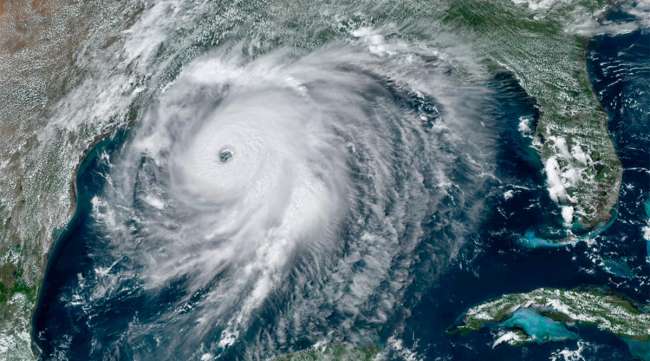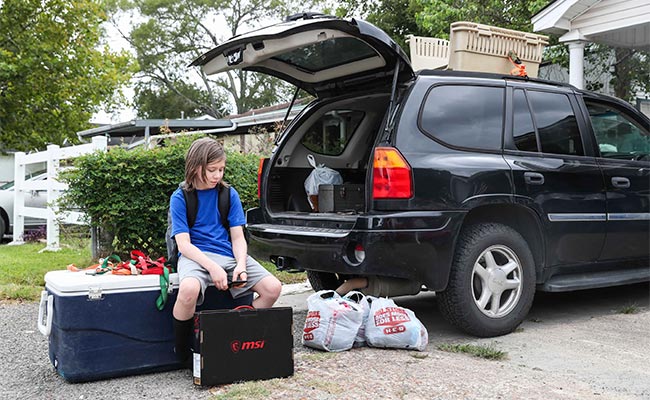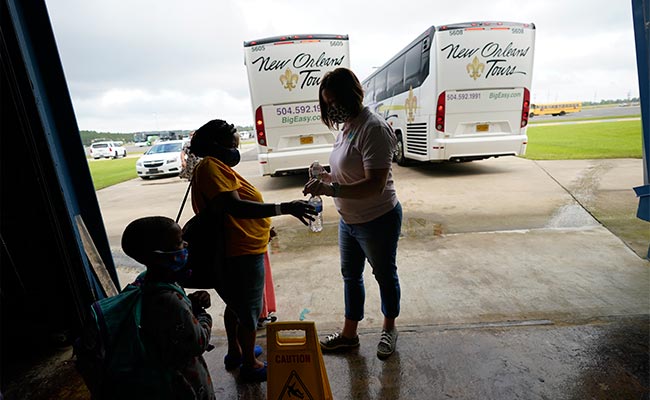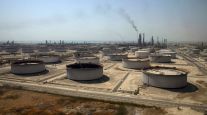Now a Category 4 Hurricane, Laura Could Bring ‘Unsurvivable’ Storm Surge

[Ensure you have all the info you need in these unprecedented times. Subscribe now.]
DELCAMBRE, La. — Laura strengthened Aug. 26 into a menacing Category 4 hurricane, raising fears of a 20-foot storm surge that forecasters said would be “unsurvivable” and capable of sinking entire communities. Authorities implored coastal residents of Texas and Louisiana to evacuate and worried that not enough had fled.
The storm grew nearly 70% in power in just 24 hours to a size the National Hurricane Center called “extremely dangerous.” Drawing energy from the warm Gulf of Mexico waters, the system was on track to arrive late Aug. 26 or early Aug. 27 as the most powerful hurricane to strike the U.S. so far this year.
“It looks like it’s in full beast mode,” University of Miami hurricane researcher Brian McNoldy said. “Which is not what you want to see if you’re in its way.”
The National Hurricane Center has forecasted "unsurvivable storm surge" from Hurricane #Laura in parts of Louisiana and Texas. Do NOT underestimate this storm.
This is what that kind of water height looks like: pic.twitter.com/ik7EtpFTzn — The Weather Channel (@weatherchannel) August 26, 2020
The hurricane threatens a center of the U.S. energy industry. The government said 84% of Gulf oil production and an estimated 61% of natural gas production were shut down. Nearly 300 platforms have been evacuated. But consumers are unlikely to see big price hikes, because the pandemic has decimated demand for fuel.
“If Laura moves further west toward Houston, there will be a much bigger gasoline supply problem,” oil analyst Andrew Lipow said, since refineries usually take two to three weeks to resume full operations.
The Federal Motor Carrier Safety Administration has issued a regional emergency declaration for Alabama, Louisiana, Mississippi and Texas, providing regulatory relief for commercial drivers who are providing direct assistance toward relief efforts.
One major Louisiana highway already had standing water as Laura’s outer bands moved ashore with tropical storm-force winds. Thousands of sandbags lined roadways in tiny Lafitte, and winds picked up as shoppers rushed into a grocery store in low-lying Delcambre. Trent Savoie, 31, said he was staying put.
“With four kids and 100 farm animals, it’s just hard to move out,” he said.

Dylan Trotti, 11, sits on an ice chest full of food as his family prepares to evacuate West Orange, Texas, Aug. 26. (Lola Gomez/Austin American-Statesman via AP)
With time running short, Texas Gov. Greg Abbott and Louisiana Gov. John Bel Edwards fretted that the dire predictions were not resonating despite authorities putting more than 500,000 coastal residents under mandatory evacuation orders. In Lake Charles, La., National Guard members drove school buses around neighborhoods, offering to pick up families. Just across the state line in Port Arthur, Texas, stragglers boarding buses were few and far between.
Abbott warned that families who do not get out of harm’s way could be cut off from help long after the storm hits.
The National Hurricane Center kept raising its estimate of Laura’s storm surge, from 10 feet just a couple of days ago to twice that size — a height that forecasters said would be especially deadly.
A Category 4 hurricane can cause damage so catastrophic that power outages may last for months in places, and wide areas could be uninhabitable for weeks or months. The threat of such devastation posed a new disaster-relief challenge for a government already straining to deal with the coronavirus pandemic. Among the parts of Louisiana that were under evacuation orders were areas turning up high rates of positive COVID-19 tests.
By the afternoon of Aug. 26, Laura had maximum sustained winds of 140 mph as it churned about 200 miles from Lake Charles, moving northwest at 16 mph. Forecasters predict winds will reach at least 145 mph but may weaken slightly before landfall.

Helpers distribute water as people board buses to evacuate Lake Charles, La., Aug. 26, ahead of Hurricane Laura. (Gerald Herbert/Associated Press)
“Heed the advice of your local authorities. If they tell you to go, go! Your life depends on it today,” said Joel Cline, tropical program coordinator at the National Weather Service. “It’s a serious day, and you need to listen to them.”
On Twitter, President Donald Trump also urged coastal residents to heed local officials. Hurricane warnings were issued from San Luis Pass, Texas, to Intracoastal City, La., and reached inland for 200 miles. Storm surge warnings were in effect from Freeport, Texas, to the mouth of the Mississippi River.
Forecasters said storm surge topped by waves could submerge entire towns. Water was already rising in the small Louisiana community of Holly Beach in the imperiled Cameron Parish, which forecasters have warned would be part of the Gulf of Mexico after the storm came ashore.
Edwards lamented that the impending storm meant suspension of community testing for COVID-19 at a crucial time — as elementary and secondary schools in Louisiana are opening and students are returning to college campuses. “We’re basically going to be blind for this week,” Edwards said, referring to the lack of testing.
Laura is expected to dump massive amounts of rain as it moves inland, causing widespread flash flooding in states far from the coast. Flood watches were issued for much of Arkansas, and forecasters said heavy rainfall could arrive by Aug. 28 in parts of Missouri, Tennessee and Kentucky. Laura is so powerful that it’s expected to become a tropical storm again once it reaches the Atlantic Ocean, potentially menacing the Northeast.
Even before dawn Aug. 26, officials in Austin said the city had run out of free hotel rooms to offer evacuees and had begun directing families fleeing the storm to a shelter nearly 200 miles farther north. In Texas’ Hardin County, which has more than 57,000 residents along the coast, officials warned that anyone who tried riding out the storm faced days or weeks without electricity.
#HurricaneLaura continues to strengthen, with sustained winds now up to 145 mph & momentary gusts to 175 mph. The eye is about 35 miles in diameter at this point, likely to make landfall around 2 a.m. or so. This is a loop of the past hour of 1-min @NOAA #GOES data. #TXwx pic.twitter.com/Q2ZJLQ714Y — Burton Fitzsimmons (@Burton_Spectrum) August 26, 2020
Becky Clements, 56, evacuated from Lake Charles after hearing that it could suffer a direct hit, almost exactly 15 years after Hurricane Rita destroyed the city. She and her family found an Airbnb hundreds of miles inland.
“The devastation afterward in our town and that whole corner of the state was just awful,” Clements said. “Whole communities were washed away, never to exist again. … So knowing how devastating the storms are, there was no way we were going to stay for this.”
Clements, a church educator, said she fears for her office, which is in a trailer following recent construction.
“I very much anticipate that my office will be gone when I get back. It will be scattered throughout that field.”
Laura closed in on the U.S. after killing nearly two dozen people on the island of Hispaniola, including 20 in Haiti and three in the Dominican Republic, where it knocked out power and caused intense flooding.
Want more news? Listen to today's daily briefing:
Subscribe: Apple Podcasts | Spotify | Amazon Alexa | Google Assistant | More




